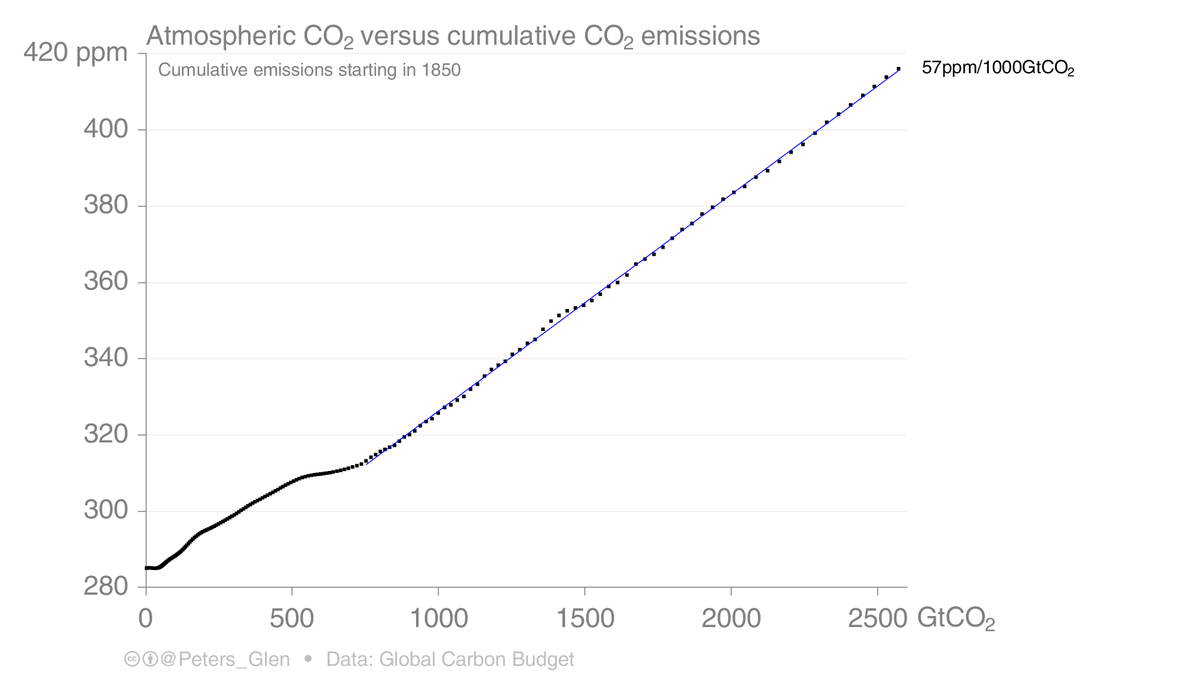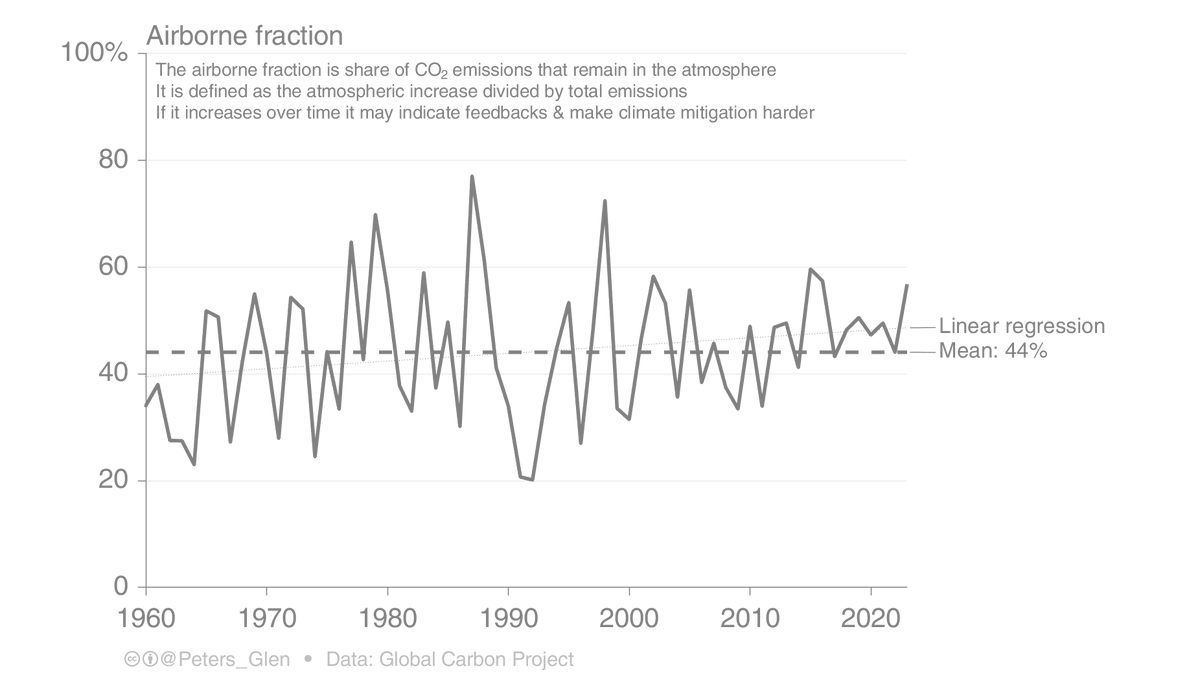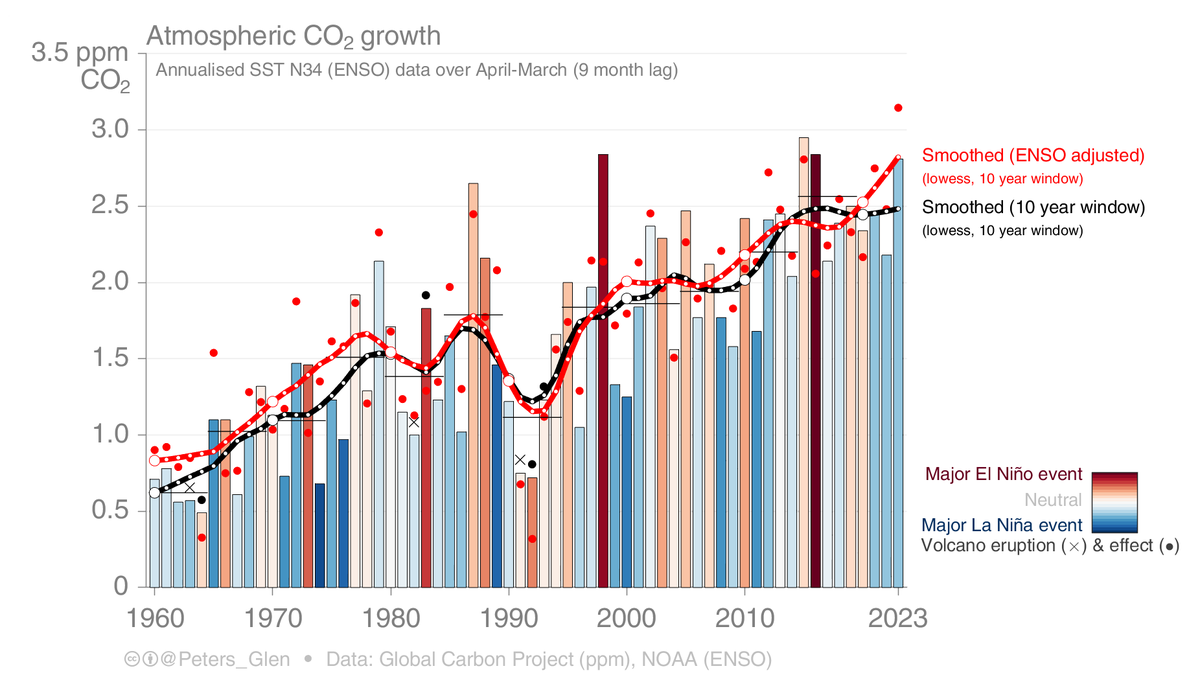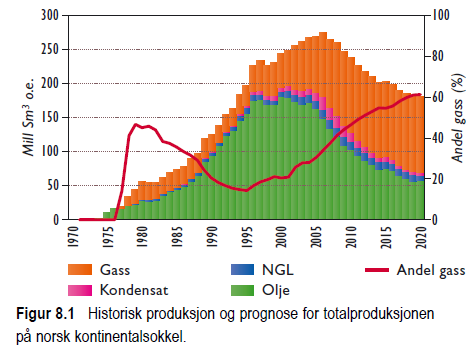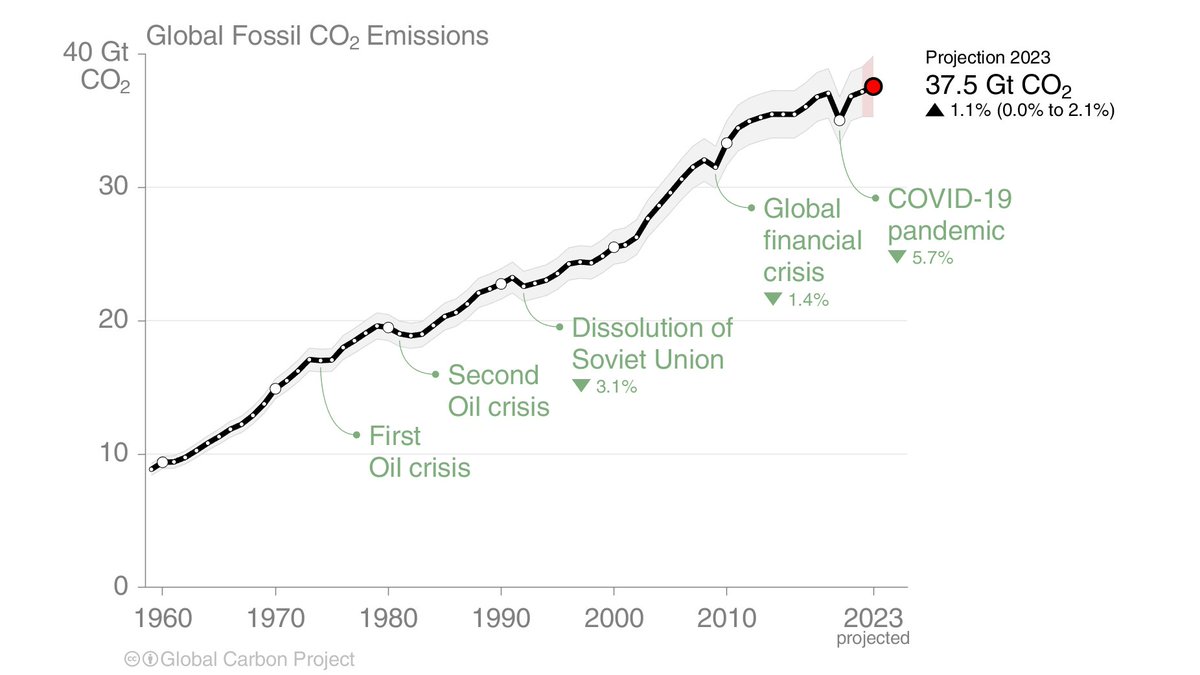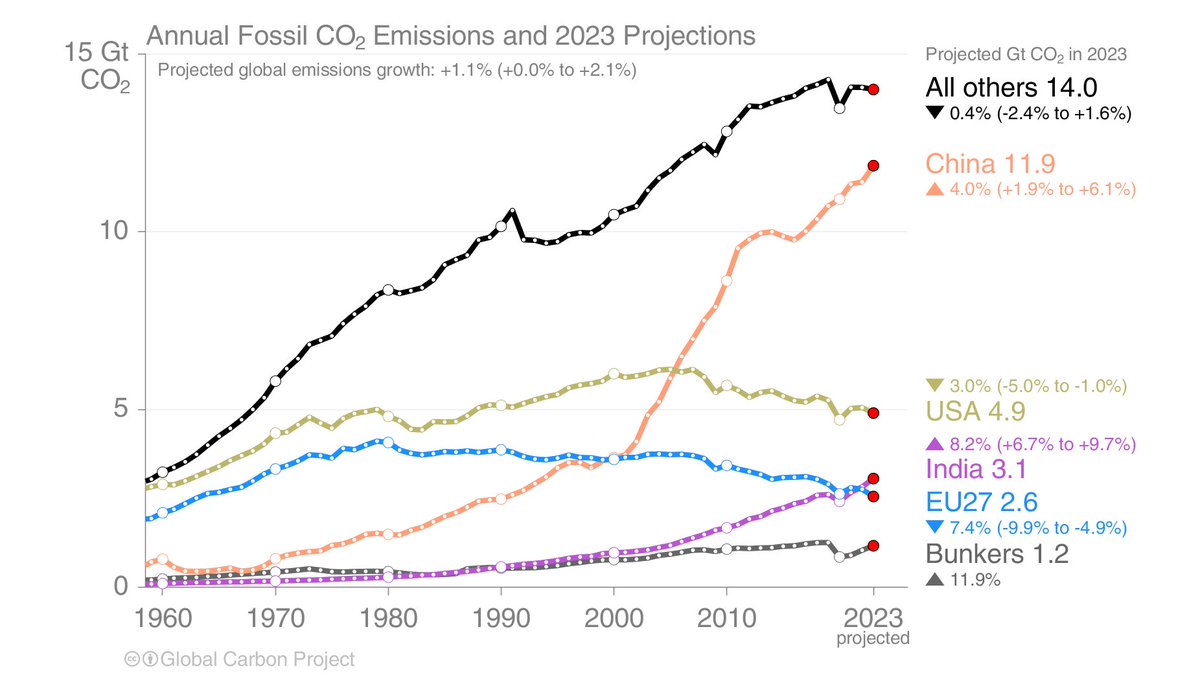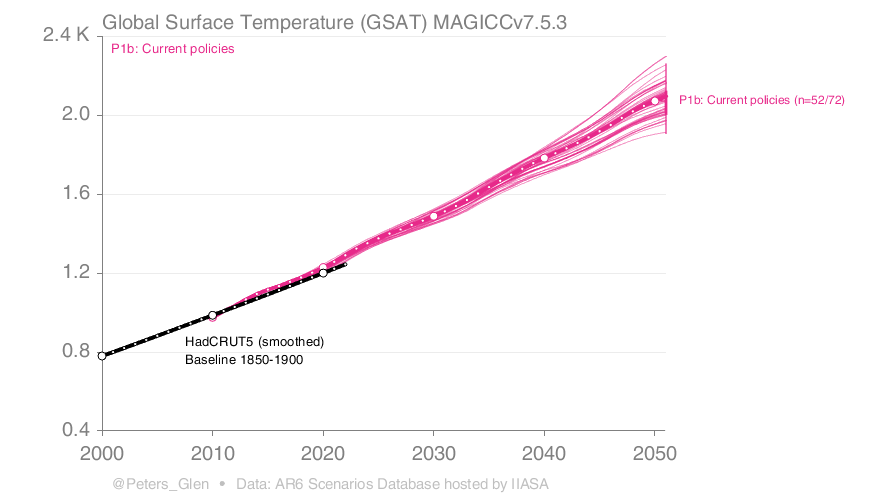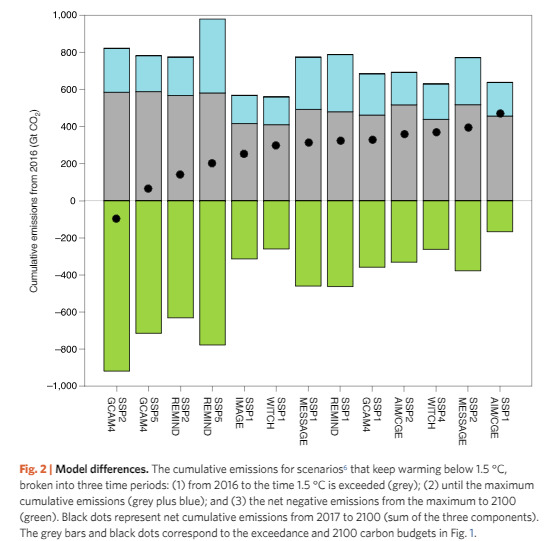Revelle & Suess (1957) were among the first to estimate
CO₂ emissions from fossil fuels & used a UN energy demand forecast to estimate emissions out to 2000.
The forecast did surprising well until the 1970's oil crises...
Read about early estimates → folk.uio.no/roberan/t/Earl…
CO₂ emissions from fossil fuels & used a UN energy demand forecast to estimate emissions out to 2000.
The forecast did surprising well until the 1970's oil crises...
Read about early estimates → folk.uio.no/roberan/t/Earl…

The divergence from the 1970's is interesting, as the oil crises spurred improvements in energy efficiency & nuclear power. It would be great to see the actual UN energy forecast by fuel type, and how it was made.
If anyone has access...
If anyone has access...
Full reference: World Energy Requirements. Proceedings of the International Conference on the Peaceful Uses of Atomic Energy, Vol 1, 1956 For [1950-62], United Nations, World Energy Supplies. Statistical papers, Series J, United Nations, New York.
(the conference was in 1955)
(the conference was in 1955)
And I recommend you read this post from @robbie_andrew, as it is a great description of the early work done on estimating CO₂ emissions... folk.uio.no/roberan/t/Earl…
• • •
Missing some Tweet in this thread? You can try to
force a refresh


